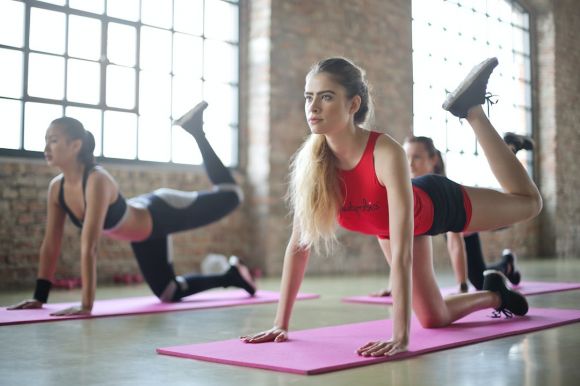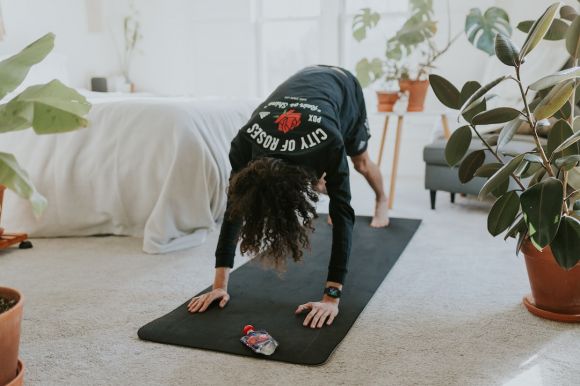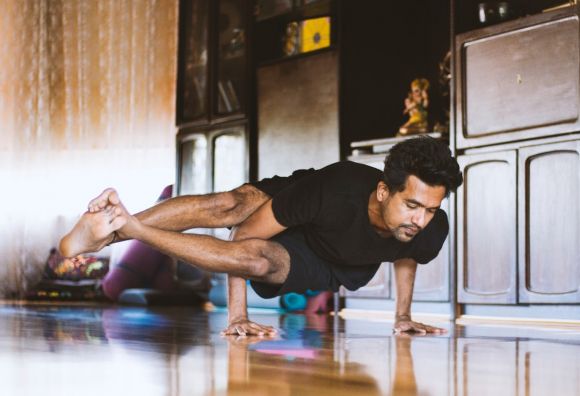Strength training is an essential component of any well-rounded fitness routine. Whether you're a beginner or an experienced lifter, selecting the right weight is crucial to ensure you're challenging your muscles effectively and minimizing the risk of injury. With so many options available, it can be overwhelming to know where to start. In this article, we will guide you through the process of choosing the right weight for your strength training workouts.
Author: fit-on
Every athlete dreams of reaching their peak performance level. Whether you are a professional athlete or a recreational sports enthusiast, sports-specific training can help you achieve your goals. This type of training focuses on the specific demands of your chosen sport, helping you develop the skills, strength, and endurance needed to excel. In this article, we will explore the benefits of sports-specific training and provide some tips on how to incorporate it into your fitness routine.
Understanding the Importance of Sports-Specific Training
Sports-specific training is designed to mimic the movements, energy systems, and physical demands of your chosen sport. By tailoring your training to your specific sport, you can improve your overall performance and reduce the risk of injury. Unlike general fitness training, which focuses on developing overall strength and cardiovascular fitness, sports-specific training hones in on the specific skills and physical attributes required for your sport.Enhancing Skill Development
One of the primary benefits of sports-specific training is its ability to enhance skill development. By incorporating drills and exercises that mimic the movements and techniques used in your sport, you can improve your muscle memory, coordination, and timing. For example, if you are a tennis player, incorporating drills that focus on footwork, agility, and racket control can help you refine your skills and become a more proficient player.Improving Strength and Power
Sports-specific training also focuses on improving strength and power in the muscles used most during your sport. By incorporating exercises that target these specific muscle groups, you can develop the explosive power and strength needed to perform at your best. For example, if you are a basketball player, incorporating exercises that target your leg muscles, such as squats and lunges, can help improve your jumping ability and overall power on the court.Increasing Endurance and Stamina
Endurance and stamina are crucial for any athlete, regardless of the sport. Sports-specific training can help you develop the cardiovascular fitness needed to sustain high-intensity efforts for longer periods. By incorporating interval training, circuit training, and long-distance runs specific to your sport, you can boost your endurance and stamina, allowing you to perform at a higher level for longer periods.Incorporating Sports-Specific Training into Your Fitness Routine
Now that you understand the benefits of sports-specific training, let's explore some tips on how to incorporate it into your fitness routine. 1. Identify the specific demands of your sport: Take the time to analyze the movements, skills, and physical attributes required for your sport. This will help you tailor your training program to address these specific areas. 2. Consult with a coach or trainer: If you are unsure how to design a sports-specific training program, seek guidance from a coach or trainer. They can help you identify weaknesses and develop a plan to address them. 3. Focus on skill development: Incorporate drills and exercises that mimic the movements and techniques used in your sport. Practice these skills regularly to improve your muscle memory and coordination. 4. Include strength and power exercises: Incorporate exercises that target the muscles used most during your sport. Focus on developing explosive power and strength in these muscle groups. 5. Prioritize endurance and stamina training: Incorporate interval training, circuit training, and long-distance runs specific to your sport. Gradually increase the duration and intensity of these workouts to improve your endurance and stamina.Conclusion
Sports-specific training is a vital component of any athlete's training program. By focusing on the specific demands of your sport, you can enhance skill development, improve strength and power, and increase endurance and stamina. By incorporating these training principles into your fitness routine, you can take your performance to new heights and achieve peak athletic performance. Remember to consult with a coach or trainer to design a program tailored to your specific needs and goals.
Losing weight can be a challenging journey, but with the right tools and mindset, it is possible to achieve your goals. Fit on is a revolutionary fitness app that can help you reach your weight loss goals and maintain a healthy lifestyle. In this ultimate guide, we will explore how Fit on can be your ultimate partner in your weight loss success.
Setting Realistic Goals
The first step to weight loss success is setting realistic goals. Fit on allows you to set specific, measurable, achievable, relevant, and time-bound (SMART) goals that will keep you motivated and focused. Whether you want to lose a certain amount of weight or fit into a specific dress size, Fit on can help you track your progress and celebrate your achievements along the way.Creating a Personalized Workout Plan
Fit on offers a wide variety of workout programs designed to suit your individual needs. From high-intensity interval training (HIIT) to yoga and Pilates, you can choose the workouts that best align with your fitness level and preferences. The app also provides beginner-friendly options for those who are just starting their weight loss journey. With a range of workout durations and difficulty levels, Fit on ensures that you can find a plan that fits into your schedule and keeps you engaged.Tracking Your Progress
One of the key features of Fit on is its ability to track your progress. The app allows you to log your workouts, record your daily food intake, and monitor your weight loss. By keeping a record of your activities and food choices, you can identify patterns and make adjustments to your routine as needed. Fit on also provides visual representations of your progress, such as graphs and charts, which can be incredibly motivating and inspiring.Staying Motivated with Challenges and Rewards
Fit on understands the importance of staying motivated throughout your weight loss journey. That's why the app offers various challenges and rewards to keep you engaged and excited. Whether it's a 30-day squat challenge or a weekly step goal, these challenges push you to go beyond your comfort zone and strive for greater results. Fit on also provides virtual rewards, such as badges and trophies, to celebrate your accomplishments and keep you motivated on your path to success.Accessing a Supportive Community
Weight loss can feel lonely at times, but with Fit on, you're never alone. The app provides access to a supportive community of like-minded individuals who are also on their weight loss journey. You can connect with others, share your progress, ask questions, and provide support to one another. Having a support system can make a world of difference in staying motivated and accountable.Maintaining a Long-Term Healthy Lifestyle
Weight loss is not just about shedding pounds; it's about adopting a healthy lifestyle that you can sustain in the long run. Fit on offers a variety of resources to help you maintain your weight loss success. From healthy recipes and meal plans to informative articles and tips, the app equips you with the knowledge and tools to make healthier choices even after you've reached your weight loss goals. In conclusion, Fit on is the ultimate partner in your weight loss success. With its personalized workout plans, progress tracking, challenges, supportive community, and resources for long-term maintenance, Fit on provides everything you need to achieve your weight loss goals and maintain a healthy lifestyle. So, start your journey with Fit on today and unlock a fitter, healthier, and happier you!
In today's fast-paced world, it's easy to fall into the trap of neglecting our physical and mental well-being. We often find ourselves rushing from one task to another, constantly under stress, and ignoring the needs of our bodies. However, taking the time to engage in activities that promote a healthy lifestyle, such as yoga and meditation, can be extremely beneficial for boosting our metabolism.
Understanding Metabolism
Before diving into how yoga and meditation can boost your metabolism, it's essential to understand what metabolism actually means. Metabolism refers to the chemical processes that occur within our bodies to maintain life. It involves converting food into energy, which is then used for various bodily functions, such as breathing, digestion, and even thinking.Yoga: A Mind-Body Connection
One of the primary benefits of practicing yoga is its ability to create a harmonious connection between the mind and body. Yoga involves a series of physical postures, breathing exercises, and meditation techniques that help release tension, improve flexibility, and promote relaxation. By engaging in regular yoga practice, you can reduce stress levels, which in turn can enhance your metabolism.Stress and Metabolism
When we experience stress, our bodies release cortisol, also known as the stress hormone. Cortisol can have a negative impact on our metabolism, leading to weight gain and slower digestion. By practicing yoga and incorporating deep breathing exercises, you can activate the body's relaxation response, reducing cortisol levels and improving your metabolism.Poses for Boosting Metabolism
Certain yoga poses are particularly effective for boosting metabolism. The "Sun Salutation" sequence is a dynamic flow that stretches and strengthens the entire body. It helps stimulate the digestive system, increase blood circulation, and revitalize the body's energy. Other poses, such as the "Camel Pose" or "Bridge Pose," can also help activate the thyroid gland, which plays a crucial role in regulating metabolism.Meditation: Calming the Mind
In addition to yoga, meditation is another powerful tool for boosting your metabolism. Meditation involves focusing your attention and eliminating the stream of thoughts that may be causing stress and anxiety. By practicing meditation regularly, you can reduce your stress levels and improve your overall well-being.Mindful Eating
One way in which meditation can positively impact your metabolism is by promoting mindful eating. Often, we eat mindlessly, not paying attention to the food we consume or the signals our bodies give us when we are full. Through meditation, you can develop a heightened sense of awareness, allowing you to make healthier food choices and eat in moderation. This can help regulate your metabolism and maintain a healthy weight.Breathing Techniques for Metabolism
Just as deep breathing exercises can reduce stress, they can also have a direct impact on your metabolism. Breath control, or pranayama, is an essential aspect of yoga and can be practiced independently for its metabolic benefits. Techniques such as "Kapalabhati" or "Bhastrika" involve rapid, forceful breathing that can increase oxygen intake and stimulate the metabolic rate.Incorporating Yoga and Meditation into Your Routine
To reap the benefits of yoga and meditation for boosting your metabolism, it's important to incorporate them into your daily routine. Set aside a specific time each day for these practices, even if it's just for a few minutes. You can start with simple yoga poses and gradually increase the duration and intensity of your practice as you become more comfortable. Similarly, start with short meditation sessions and gradually extend the time as you build your focus and concentration.Final Thoughts
Boosting your metabolism is not just about shedding pounds; it's about promoting overall well-being. By incorporating yoga and meditation into your daily routine, you can reduce stress levels, improve digestion, and create a healthier mind-body connection. So, take a break from the hustle and bustle of life and invest in activities that nourish your body and soul.
Regular physical activity is crucial for maintaining good health, especially for individuals at risk of or managing diabetes. Among the various forms of exercise, cardiovascular exercises play a significant role in both preventing and managing diabetes. These exercises, also known as aerobic exercises, involve the repetitive and continuous movement of large muscle groups, thereby increasing heart rate and improving overall cardiovascular health. In this article, we will explore the benefits of cardiovascular exercises and provide some examples that can help prevent and manage diabetes.
Improved Insulin Sensitivity
One of the primary benefits of cardiovascular exercises for individuals with diabetes is improved insulin sensitivity. Insulin is a hormone that helps regulate blood sugar levels. People with diabetes either have insufficient insulin production or their bodies do not effectively use the insulin produced. Engaging in regular cardiovascular exercises increases the body's sensitivity to insulin, making it easier for cells to uptake glucose from the bloodstream. This, in turn, helps regulate blood sugar levels and reduce the risk of complications associated with diabetes.Weight Management
Maintaining a healthy weight is crucial for individuals with diabetes, as excess body weight can worsen insulin resistance and increase the risk of developing complications. Cardiovascular exercises are an effective way to manage weight, as they burn calories and promote fat loss. These exercises elevate heart rate and increase metabolism, leading to the burning of stored fat for energy. Engaging in activities such as brisk walking, jogging, cycling, or swimming can help individuals with diabetes achieve and maintain a healthy weight.Reduced Risk of Cardiovascular Complications
Diabetes is closely linked to an increased risk of cardiovascular diseases such as heart attacks and strokes. Regular cardiovascular exercises can significantly reduce this risk by improving heart health. These exercises strengthen the heart muscle, enhance blood circulation, and lower blood pressure and cholesterol levels. Engaging in activities like running, dancing, or using cardiovascular equipment at the gym can help individuals with diabetes maintain a healthy cardiovascular system and reduce the likelihood of developing complications.Enhanced Mood and Mental Well-being
Living with diabetes can be challenging both physically and mentally. Cardiovascular exercises have been shown to have a positive impact on mood and mental well-being. When we exercise, our bodies release endorphins, which are natural mood-boosting chemicals. These endorphins help reduce stress, anxiety, and depression, common mental health issues faced by individuals with diabetes. Engaging in activities such as swimming, dancing, or participating in group fitness classes can provide a much-needed mental boost and improve overall quality of life.Exercise Recommendations for Diabetes Prevention and Management
It is important to consult with a healthcare professional before starting any exercise regimen, especially for individuals with diabetes. However, here are a few examples of cardiovascular exercises that are generally safe and beneficial for preventing and managing diabetes: 1. Brisk Walking: Walking at a fast pace for at least 30 minutes a day can help improve cardiovascular health and regulate blood sugar levels. 2. Cycling: Cycling is a low-impact exercise that can be easily incorporated into daily routines. It helps improve cardiovascular fitness and aids in weight management. 3. Swimming: Swimming is a full-body workout that is gentle on the joints. It improves cardiovascular health, builds muscle strength, and enhances flexibility. 4. Dancing: Dancing is a fun and enjoyable way to get moving. It increases heart rate, improves coordination, and helps burn calories. In conclusion, cardiovascular exercises are essential for preventing and managing diabetes. These exercises improve insulin sensitivity, aid in weight management, reduce the risk of cardiovascular complications, and enhance mood and mental well-being. Engaging in activities like brisk walking, cycling, swimming, or dancing can help individuals with diabetes lead a healthier and more fulfilling life. Remember to always consult with a healthcare professional before starting any exercise regimen, and gradually increase the intensity and duration of exercise over time.
When it comes to fitness, many people think that building a strong and toned lower body requires heavy weights and complicated gym equipment. However, this is simply not true! You can effectively sculpt your lower body without weights, using only your body weight and a few simple exercises. In this article, we will explore some of these exercises and show you how to get started on your journey to a stronger lower body.
1. Bodyweight Squats
Bodyweight squats are a fantastic exercise for targeting the muscles in your lower body, including your quadriceps, hamstrings, and glutes. To perform a bodyweight squat, stand with your feet shoulder-width apart and your toes pointing slightly outward. Lower your body down as if you were sitting back into a chair, keeping your chest up and your knees behind your toes. Push through your heels to return to the starting position. Aim for three sets of 12-15 repetitions.2. Lunges
Lunges are another excellent exercise for sculpting your lower body. They primarily target your quadriceps, hamstrings, and glutes, while also engaging your core for stability. To perform a lunge, start by standing with your feet hip-width apart. Take a big step forward with your right foot and lower your body down until both knees are bent at a 90-degree angle. Push through your right heel to return to the starting position and repeat on the other side. Aim for three sets of 10-12 lunges on each leg.3. Glute Bridge
The glute bridge is a fantastic exercise for targeting your glutes and hamstrings. To perform a glute bridge, lie on your back with your knees bent and your feet flat on the ground. Lift your hips up towards the ceiling, squeezing your glutes at the top of the movement. Lower your hips back down and repeat for three sets of 12-15 repetitions. To make this exercise more challenging, you can try single-leg glute bridges or elevate your feet on a step.4. Step-Ups
Step-ups are a great exercise for targeting your quadriceps, hamstrings, and glutes, while also improving your balance and coordination. To perform a step-up, find a sturdy step or bench and place one foot on top of it. Push through your heel to lift your body up onto the step, then step back down with the opposite foot. Repeat for three sets of 10-12 step-ups on each leg. To increase the difficulty, you can hold dumbbells or water bottles in your hands.5. Calf Raises
Don't forget about your calves! Calf raises are a simple yet effective exercise for sculpting your lower legs. To perform a calf raise, stand with your feet hip-width apart and lift your heels off the ground, rising up onto the balls of your feet. Lower your heels back down and repeat for three sets of 15-20 repetitions. To make this exercise more challenging, you can perform it on an elevated surface, such as a step or curb. In conclusion, you don't need weights or fancy equipment to sculpt your lower body. By incorporating bodyweight squats, lunges, glute bridges, step-ups, and calf raises into your fitness routine, you can effectively target and strengthen your lower body muscles. Remember to start slowly and gradually increase the intensity and volume of your workouts over time. With consistency and dedication, you will soon notice improvements in your lower body strength and overall physique. So, get started today and start sculpting your lower body without weights!
Pilates is a fantastic exercise that focuses on building core strength, flexibility, and overall body awareness. One of the most popular challenges in the Pilates world is the Fit on Pilates Challenge. This challenge is designed to push you to your limits and help you achieve a stronger core. In this article, we will explore how you can master the Fit on Pilates Challenge for core strength.
Understanding the Fit on Pilates Challenge
Before we dive into the tips and tricks, let's take a moment to understand what the Fit on Pilates Challenge entails. This challenge consists of a series of intense Pilates exercises that target your core muscles. Each exercise is designed to challenge your stability, strength, and endurance.Preparing for the Challenge
To successfully master the Fit on Pilates Challenge, it's important to prepare your body beforehand. Start by incorporating regular Pilates workouts into your routine to build your core strength gradually. This will help you develop the necessary stability and control needed for the challenge.Mastering the Basics
Before attempting the Fit on Pilates Challenge, make sure you have a solid foundation in the basic Pilates movements. This includes exercises such as the plank, the bridge, and the hundred. These exercises will help you build strength and stability in your core, preparing you for the more advanced moves in the challenge.Focus on Breath and Alignment
During the Fit on Pilates Challenge, it's crucial to maintain proper breath control and alignment. Breathing deeply and fully will help you engage your core muscles more effectively, allowing you to perform the exercises with greater precision and control. Additionally, paying attention to your alignment will ensure that you are working the correct muscles and avoiding unnecessary strain.Gradually Increase Intensity
The Fit on Pilates Challenge is designed to push you to your limits, but it's important to listen to your body and progress at your own pace. Start with the beginner level exercises and gradually increase the intensity as you build strength and confidence. Pushing yourself too hard too soon can lead to injuries and setbacks.Stay Consistent
Consistency is key when it comes to mastering the Fit on Pilates Challenge. Aim to practice regularly, ideally three to four times a week. This will allow your body to adapt and progress efficiently. Remember, Rome wasn't built in a day, and neither will your core strength be. Stay committed and trust the process.Modify when Necessary
If you find certain exercises in the Fit on Pilates Challenge too challenging, don't be afraid to modify them. There is no shame in making adjustments to accommodate your current fitness level. Use props such as blocks or straps to assist you in the exercises or opt for alternative movements that target the same muscle groups.Celebrate Your Achievements
As you progress through the Fit on Pilates Challenge, don't forget to celebrate your achievements along the way. Whether it's holding a plank for an extra ten seconds or completing a challenging exercise with proper form, every small victory counts. Recognize and appreciate the progress you are making on your journey to mastering the Fit on Pilates Challenge. In conclusion, mastering the Fit on Pilates Challenge for core strength requires preparation, focus, and consistency. By gradually increasing intensity, staying consistent, and celebrating your achievements, you will develop a stronger core and improve your overall Pilates practice. Remember, the Fit on Pilates Challenge is meant to challenge you, but it is also an opportunity for growth and self-discovery. Embrace the challenge and enjoy the journey towards a stronger, more resilient core.
We've all been there - that overwhelming desire for a bag of potato chips or a slice of chocolate cake. Cravings can be powerful and hard to resist, but with a few simple strategies, you can learn how to curb them and stay on track with your health and fitness goals. In this article, we will explore some effective techniques to help you manage your cravings and make healthier choices.
Understanding the Source of Cravings
Before we dive into the strategies, it's important to understand why we experience cravings in the first place. Cravings can be triggered by a variety of factors, including stress, emotions, and even nutrient deficiencies. By recognizing the underlying cause of your cravings, you can address them more effectively.1. Stay Hydrated
Often, what we perceive as hunger is actually thirst. Dehydration can lead to increased cravings, especially for sugary or salty foods. Make sure to drink enough water throughout the day to stay properly hydrated and reduce the likelihood of cravings.2. Eat Balanced Meals
One of the best ways to curb cravings is to ensure you're getting all the nutrients your body needs. Eating balanced meals that include a combination of protein, healthy fats, and complex carbohydrates can help keep you satisfied and prevent cravings from creeping in.3. Get Enough Sleep
Lack of sleep can disrupt your hormones and increase your cravings for unhealthy food. Aim for seven to eight hours of quality sleep each night to help regulate your appetite and reduce cravings.4. Manage Stress
Stress is a common trigger for cravings, especially for comfort foods. Find healthy ways to manage stress, such as exercise, meditation, or spending time with loved ones. By addressing the root cause of your stress, you can effectively reduce cravings.5. Practice Mindful Eating
Mindful eating is the practice of paying attention to your food and eating experience. Slow down, savor each bite, and listen to your body's hunger and fullness cues. By eating mindfully, you can become more aware of your cravings and make conscious choices about what and how much you eat.6. Distract Yourself
When a craving strikes, distracting yourself can be a powerful tool. Engage in a different activity, such as going for a walk, reading a book, or calling a friend. By shifting your focus away from the craving, you can reduce its intensity and duration.7. Keep Healthy Snacks on Hand
Having healthy snacks readily available can help you make better choices when cravings hit. Stock your pantry and fridge with fruits, vegetables, nuts, and seeds. These nutrient-dense options will satisfy your hunger and provide your body with the nourishment it needs.8. Seek Support
Don't be afraid to reach out for support when you're struggling with cravings. Talk to a friend, family member, or a health professional who can offer guidance and encouragement. Having someone to hold you accountable can make a significant difference in overcoming cravings.In Conclusion
Cravings are a common part of life, but they don't have to derail your health and wellness journey. By understanding the source of your cravings and implementing these strategies, you can take control and make healthier choices. Remember, it's about progress, not perfection. Stay committed, be kind to yourself, and you'll find that curbing your cravings becomes easier over time.
A strong and healthy heart is essential for overall well-being. Regular cardiovascular exercise is one of the best ways to keep your heart strong and functioning optimally. In this article, we will explore some of the most effective cardiovascular exercises that can help you achieve a strong heart.
Running: The Ultimate Cardio Workout
Running is a classic cardiovascular exercise that provides numerous benefits for the heart. Whether you prefer jogging or sprinting, running engages multiple muscle groups and increases heart rate, leading to improved cardiovascular fitness. It also helps burn calories, contributing to weight management and reducing the risk of heart disease.Cycling: Pedal Your Way to a Strong Heart
Cycling is a low-impact exercise that is gentle on the joints while offering great cardiovascular benefits. Whether you choose outdoor cycling or indoor spinning classes, this exercise increases heart rate, improves lung capacity, and strengthens leg muscles. Cycling regularly can also help lower blood pressure and improve overall cardiovascular health.Swimming: Dive Into Heart Health
Swimming is a fantastic full-body exercise that provides a great cardiovascular workout. It engages all major muscle groups, including the heart, to improve endurance and cardiovascular fitness. Swimming is particularly beneficial for individuals with joint issues, as it is a low-impact exercise that puts minimal stress on the joints. It also helps improve lung capacity and promotes overall cardiovascular health.Jumping Rope: A Fun and Effective Cardio Exercise
Jumping rope is not just for kids! It is a highly effective cardiovascular exercise that can be done anywhere and requires minimal equipment. Jumping rope increases heart rate, improves coordination, and strengthens muscles in the lower body. It is also a fantastic calorie-burning exercise that can help with weight management and reduce the risk of heart disease.High-Intensity Interval Training (HIIT): Maximum Results in Minimum Time
High-intensity interval training (HIIT) is a form of cardiovascular exercise that involves short bursts of intense exercise followed by active recovery periods. It is an efficient way to improve cardiovascular fitness, as it elevates heart rate and burns calories in a short amount of time. HIIT workouts can be tailored to individual fitness levels and can be done with various exercises, such as running, cycling, or bodyweight exercises.Dancing: Groove Your Way to a Healthy Heart
Dancing is a fun and enjoyable way to get your heart pumping. Whether you prefer salsa, hip-hop, or Zumba, dancing provides a great cardiovascular workout. It improves cardiovascular fitness, coordination, and flexibility. Dancing also releases endorphins, which can boost mood and reduce stress, further benefiting heart health.Incorporating Cardiovascular Exercises Into Your Routine
To reap the benefits of cardiovascular exercise, it is important to incorporate it into your routine consistently. Aim for at least 150 minutes of moderate-intensity cardiovascular exercise or 75 minutes of vigorous-intensity exercise per week. You can break this down into shorter sessions throughout the week to make it more manageable. Remember to warm up before starting any cardiovascular exercise and cool down afterward to prevent injury and promote recovery. It is also essential to listen to your body and gradually increase the intensity and duration of your workouts over time. In conclusion, cardiovascular exercises are crucial for maintaining a strong and healthy heart. Running, cycling, swimming, jumping rope, HIIT, and dancing are all excellent options for improving cardiovascular fitness and overall heart health. Find the exercises that you enjoy the most and make them a regular part of your routine. Your heart will thank you for it!
When it comes to exercise, many people focus solely on the physical movements and intensity of their workout. However, one often overlooked aspect of exercise is the importance of proper breathing techniques. Whether you’re running, lifting weights, or practicing yoga, the way you breathe can have a significant impact on your performance, endurance, and overall well-being. In this article, we will explore the benefits of incorporating proper breathing techniques into your exercise routine.









